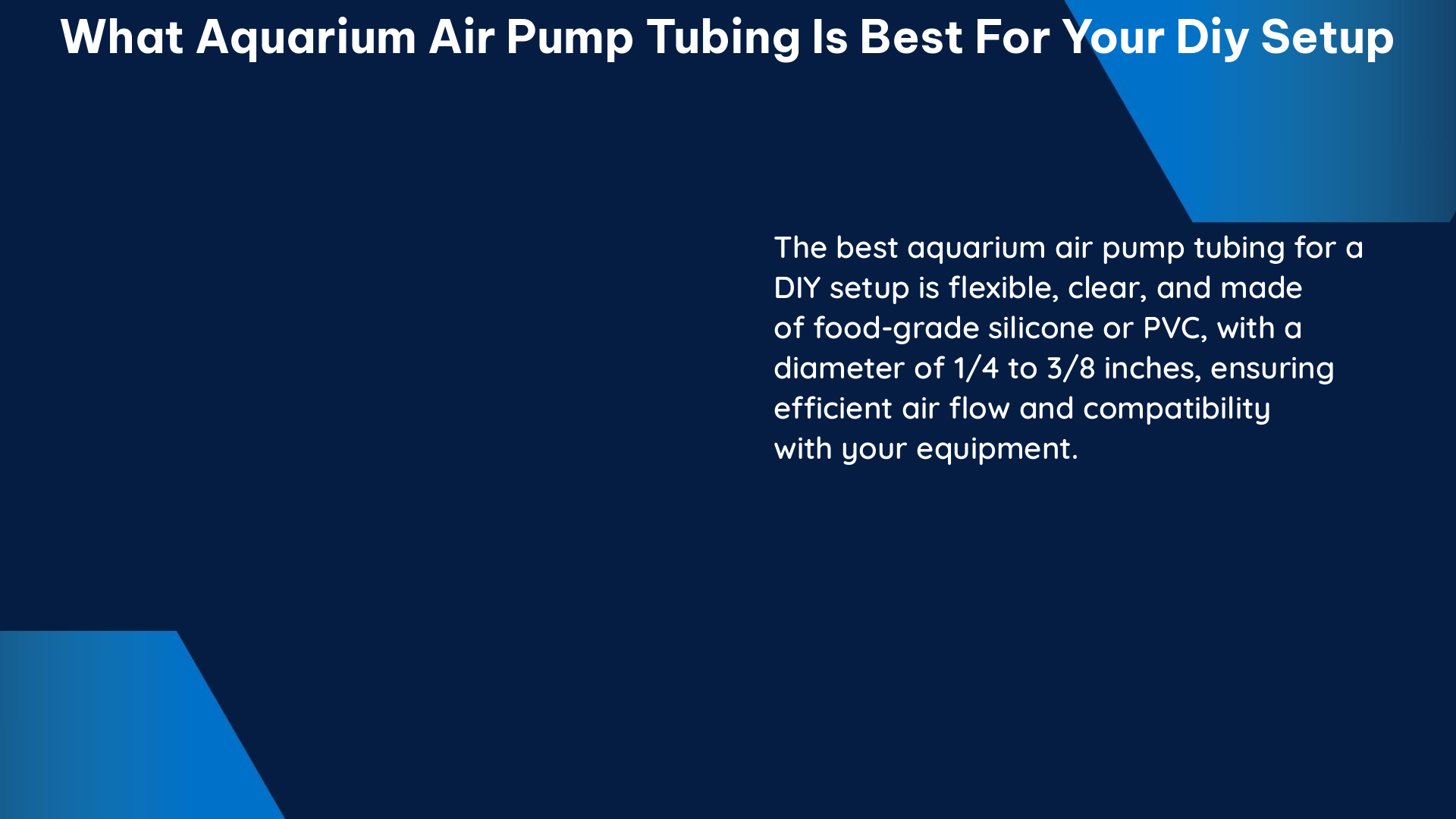When it comes to setting up a DIY aquarium, the choice of air pump tubing can make a significant difference in the overall performance and efficiency of your system. The best aquarium air pump tubing should be able to maintain consistent airflow and pressure, while also being flexible, durable, and easy to clean and maintain. In this comprehensive guide, we’ll dive deep into the technical specifications, material considerations, and practical tips to help you select the perfect air pump tubing for your DIY aquarium setup.
Understanding the Technical Specifications
Inner Diameter (ID) and Outer Diameter (OD)
The inner diameter (ID) and outer diameter (OD) of the air pump tubing are crucial factors to consider. The ID determines the amount of airflow, while the OD affects the friction and pressure loss in the tubing. Most standard aquarium airline tubing has an ID of 3/16 inch (4.76 mm), which is suitable for most aquarium setups. However, for larger aquariums or high-flow applications, you may want to consider tubing with a larger ID, such as 1/4 inch (6.35 mm) or even 5/16 inch (7.94 mm).
It’s important to note that the ID and OD of the tubing should be consistent throughout the entire length to maintain a uniform airflow. Sudden changes in diameter can cause turbulence and pressure drops, which can negatively impact the performance of your air pump and the overall aeration of your aquarium.
Tubing Length and Pressure
The length of the air pump tubing can also affect the airflow and pressure, but the impact is generally negligible in most aquarium setups. As the air travels through the tubing, it experiences friction, which can slow down the airflow. However, once the air pump has built up a certain pressure, that pressure will remain relatively consistent, regardless of the tubing length.
To illustrate this, one user reported running an airline from their basement up to the first floor, a distance of at least 20 feet (6.1 m), without any noticeable loss of pressure. This suggests that the length of the tubing is not a significant factor in most DIY aquarium setups, as long as the tubing is not excessively long (e.g., exceeding 50 feet or 15.2 m).
Measuring Airflow
To quantify the airflow of your air pump, you can use a simple method suggested by one user. By placing the air pump in a tank of water and collecting the bubbles in a measuring cup for a known period of time, you can calculate the flow rate by dividing the volume of the collected bubbles by the time. This simple test can help you determine the actual airflow of your air pump and ensure that it is providing the desired level of aeration for your aquarium.
Choosing the Right Tubing Material

Silicone Tubing
Silicone tubing is a popular choice for aquarium air pump tubing due to its flexible and durable nature. It is generally matte in texture and does not harden over time, making it a reliable option for long-term use. Silicone tubing is also relatively easy to clean and maintain, as it does not tend to accumulate as much buildup as other materials.
One potential downside of silicone tubing is its higher cost compared to other options, such as rubber tubing. However, the increased durability and longevity of silicone may make it a worthwhile investment for many DIY aquarium enthusiasts.
Rubber Tubing
Rubber tubing is another common choice for aquarium air pump tubing. It is generally more affordable than silicone and is also quite durable and kink-resistant. Rubber tubing is often shiny in appearance and can become slightly harder over time, but it still maintains its flexibility.
One advantage of rubber tubing is the availability of clear options, which allow for better visibility of the tubing and the air check valve. This can be particularly useful for monitoring the airflow and troubleshooting any issues that may arise.
Practical Considerations
Tubing Flexibility and Kink Resistance
Regardless of the material, the air pump tubing you choose should be flexible and resistant to kinking. Kinks in the tubing can restrict airflow and cause pressure drops, which can negatively impact the performance of your air pump and the overall aeration of your aquarium.
Look for tubing that is supple and easy to bend without forming sharp creases or folds. Avoid tubing that feels stiff or brittle, as it is more likely to kink and become a source of airflow issues.
Ease of Cleaning and Maintenance
The air pump tubing you select should also be easy to clean and maintain. Over time, the tubing can accumulate mineral deposits, algae, or other debris, which can impede airflow and reduce the overall efficiency of your system.
Choose a tubing material that is smooth and non-porous, making it easier to clean with a simple vinegar or bleach solution. Avoid tubing with rough or textured surfaces, as they can be more challenging to keep clean.
Conclusion
By considering the technical specifications, material properties, and practical factors, you can select the best aquarium air pump tubing for your DIY setup. Remember to prioritize consistent airflow, flexibility, durability, and ease of maintenance to ensure the long-term performance and reliability of your aquarium’s aeration system.
Reference:
– Cichlid Forum Thread on Air Pumps for Small Fish Room
– Reddit Thread on Measuring Air Pump Airflow
– FishLore Forum Thread on Maximum Airline Tubing Length
– MonsterFishKeepers Forum Thread on Airline Tubing Length
– Guppy Guide Blog Post on Air Line Tubing
